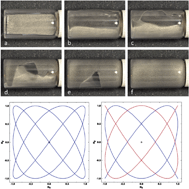Symmetry-breaking magnetic fields create a vortex fluid that exhibits a negative viscosity, active wetting, and strong mixing
Abstract
There are many areas of science and technology where being able to generate vigorous, noncontact flow would be desirable. We have discovered that three dimensional, time-dependent electric or magnetic fields having key symmetries can be used to generate controlled fluid motion by the continuous injection of energy. Unlike natural convection, this approach does not require a thermal gradient as an energy source, nor does it require gravity, so space applications are feasible. The result is a highly active material we call a vortex fluid. The homogeneous torque density of this fluid enables it to climb walls, induce ballistic droplet motion, and mix vigorously, even in such complex geometries as porous media. This vortex fluid can also exhibit a negative viscosity, which can immeasurably extend the control range of the “smart fluids” used in electro- and magnetorheological devices and can thus significantly increase their performance. Because the applied fields are uniform and modest in strength, vortex fluids of any scale can be created, making applications of any size, from directing microdroplet motion to controlling damping in magnetorheological dampers that protect bridges and buildings from earthquakes, feasible.


 Please wait while we load your content...
Please wait while we load your content...